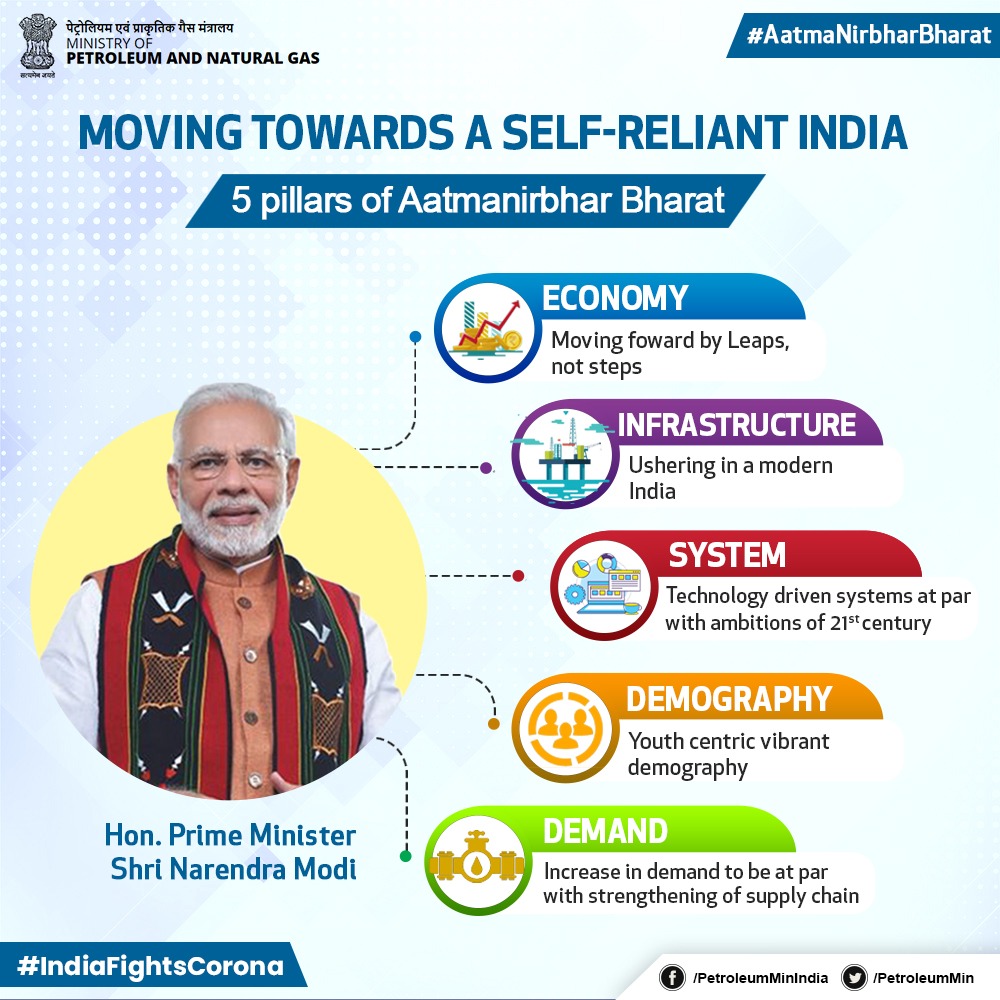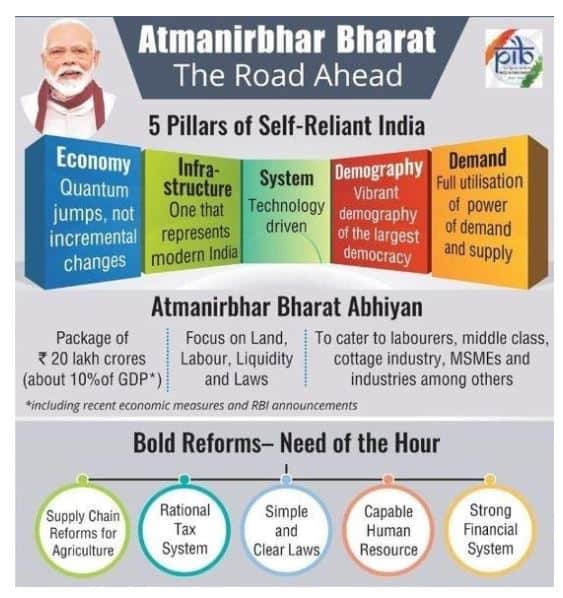A Self Reliant Foreign Policy
Relevance: Mains: G.S paper II: Groupings & Agreements Involving India and/or Affecting India’s Interests; Effect of Policies & Politics of Countries on India’s Interests

Context
Self-reliance is the theme of India’s 74th Independence Day. This concept is commonly associated with the economy and production of key goods and services within the country. But it also has a parallel dimension in the domain of foreign policy.
Introduction
It is important to note that, even in the geopolitical circumstances that compelled India to enter into alliance-like cooperation with major powers, it did not become any less autonomous or entered into alliance with any great power.
Rather, India secured its freedom, sovereignty and territorial integrity by balancing the great power equations with diplomacy. However, present geo-political scenarios present a challenge to strategic autonomy.
Therefore, as the economic goal is to reduce dependence on imports for critical commodities, the aim of foreign policy should be to maintain strategic autonomy.

Indian and Changing World Order
India has historically prided itself as an independent developing country which did not succumb to pressure from great powers. This can be reflected in the different phases of world order:
- Bipolar (1947 to 1991) in which the majority of global economic, military and cultural influence was held between U.S. and USSR.
- During this phase India adhered to the principle of Non Alignment to resist dilution of its sovereignty, rebuild its economy and consolidate its integrity.
- Unipolar (1991 to 2008) when the U.S. entered a long cycle of economic crises and China caught up with it in overall power.
- This is the period where India reached out to engage with US, Israel and ASEAN countries more intensively. The quest for strategic autonomy now was particularly focused on securing its nuclear weapon option (Pokhran II 1998).
- Multipolar (present times) where distribution of power is in more than two countries having nearly equal amounts of military, cultural, and economic influence.
- In this phase of transitional geopolitics, India’s policy of Non-Alignment has turned into Multi Alignment.
Flexibility in Strategic Autonomy
Adherence to strategic autonomy has been the key pillar of India’s Foreign policy. However, it has often been adjusted as per the changing geopolitical situations in history . In moments of crisis, India has reinterpreted freedom and shown flexibility for survival at many instances. For Example:
- India-China War (1962): Initially,in pursuance of maintaining strategic autonomy, India established the Non-Alignment Movement (NAM) (1961). It marked the peak of Third World solidarity.
- However during the India -China war 1962, India had to appeal to the U.S. for emergency military aid to stave off the Chinese from taking over the whole of Eastern India.
- Indo Pakistan War (1971): In the build-up to the 1971 war with Pakistan, India had to enter a Treaty of Peace, Friendship and Cooperation with the Soviet Union to ward off both China and the U.S.
- Kargil War (1999): India welcomed a direct intervention by the U.S. to force Pakistan to back down.
Present Day Scenario of Strategic Autonomy
- Risk From China: Today, although there are less prospects of a direct war with China in the wake of its incursions across the Line of Actual Control, India is at a turning point with regard to strategic autonomy.
- Aggressive foreign policy of China may require India to bandwagon (cooperating with like minded countries) to balance China.
- New Cold War like situation: The New Cold War scenario has created a threat environment in which China and the U.S. are now beginning to confront many areas like Trade war and South China sea.
- India can promote new multilateralism under the aegis of Vasudhaiva Kutumbakam- which relies on restructuring both the economic order and societal behaviour for equitable sustainable development.
- Fear of losing strategic autonomy to the U.S.: Fears in some quarters that proximity to the U.S. will lead to loss of India’s strategic autonomy. However, it seems overblown because independent India has never been subordinated to a foreign hegemony.
Way Forward to Self-Reliance
- Revival of Non Alignment: Non-Alignment 2.0 with China and the U.S. is the solution as they slide into a New Cold War, risking India’s security and sovereignty.
- The New Cold War can be reflected in Trade War, Quad initiative, Indo-pacific narrative, emergence of Shanghai Cooperation Organisation, naval presence in the Indian ocean, etc. Thus NAM2.0 can insulate India from active engagements in conflicts.
- Intensified Cooperation: India should aim to stay as an independent power centre by means of intensified cooperation with middle powers in Asia and around the world.
- Indegenous defence modernisation: India is dependent on many foriegn players (like U.S, Russia etc.) for its defence requirement, this may not pave well in national interest.
- Therefore, it is imperative to speed up indigenous defence modernisation.
- Further, defense indigenisation assumes more significance, especially in the context of counterbalancing China.
- Diversification in strategic partners: The present-day geopolitical and geostrategic circumstances present a multifaceted challenge to India’s foreign policy.
- Therefore, India’s cold war narrative of strategic neutrality is being gradually replaced by strategic hedging.
- In a multipolar world India should not limit its engagements with Russia, the US and China but expand its relationship with other countries of the EU, Asean etc.
Conclusion
In the past, India has been successfully deploying ‘multi-vector’ foreign policy. In this context, Indian foriegn policy should not envisage complete isolation or entering into alliance with one great power but a variable combination with several like-minded partners.
For more such notes, Articles, News & Views Join our Telegram Channel.
Click the link below to see the details about the UPSC –Civils courses offered by Triumph IAS. https://triumphias.com/pages-all-courses.php

